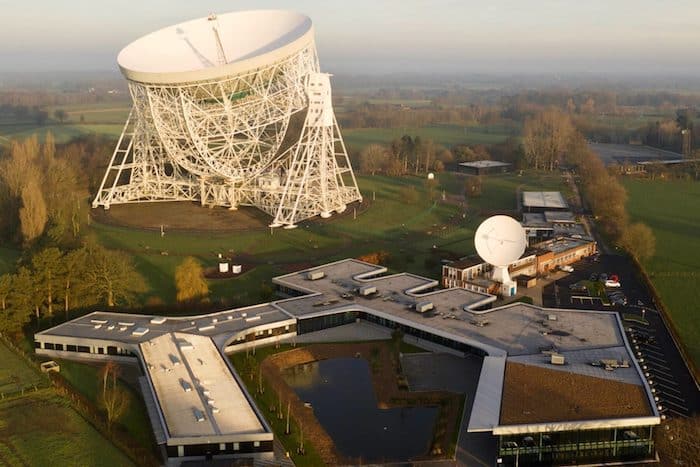Hear about the truly astounding next-generation radio telescopes, built by a global consortium anchored in North West England.
Presented by Manchester Lit & Phil:
Hear about the truly astounding next-generation radio telescopes, built by a global consortium anchored in North West England, from one of the project’s leaders.
What are radio telescopes exactly? And why is the history and development of them particularly significant to our region?
Radio telescopes are used by astronomers to study radio waves emitted by distant objects in the universe. They can be used in the daytime as well as at night and are less sensitive to atmospheric conditions.
Since astronomical radio sources – planets, stars, nebulae and galaxies – are extremely distant, the radio waves coming from them are very weak. Moreover, radio waves have long wavelengths relative to optical waves. For these reasons, radio telescopes need large antennae and highly sensitive receiving equipment. It is also better to locate radio observatories as far as possible from centres of population to avoid interference from man-made electronic devices.
The world-famous Lovell Telescope at Jodrell Bank, Cheshire – which has a large single dish antenna – meets these criteria and has been used to make significant contributions to radio astronomy over the years. How has the technology developed since the Lovell was completed in 1957?
Rather than being based on a single antenna, the latest generation of radio telescopes use arrays of antennae that are linked together to form the equivalent of a much larger single antenna. Over the last three decades, astronomers and engineers from around the world have been planning, designing and, finally, building two huge, next-generation radio telescopes. One is located in the Karoo in South Africa, the other in the Murchison region of Western Australia. The whole project is run by the Square Kilometre Array Observatory (SKAO), whose headquarters are located at Jodrell Bank.
Phil Diamond’s talk will provide insights into the scientific motivations behind the SKA, covering subjects as diverse as the evolution of the Universe and the origins of life. He will describe the history of the project, in which Manchester and Jodrell Bank play a key role, and explain some of the differences between SKAO and traditional observatories, both optical and radio. As an example, one of the key differences is the sheer volumes of data that will be generated. What are the strategies and techniques being developed to manage this oncoming deluge of data? Phil will talk to us about that. And we’ll also get the chance to see the latest images of the construction progress, which is now at a very exciting phase.
Don’t miss out on what promises to be a brilliant talk by a multi-award-winning scientist from the University of Manchester. The event is open to anyone interested in science and technology and you don’t need any specialist knowledge to enjoy it.
Book The Square Kilometre Array at International Anthony Burgess Foundation




